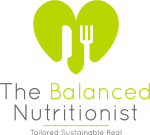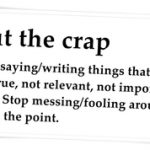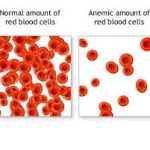Over the past few years, there has been increasing attention given to the importance of gut health for everything from mental health to weight management and everything in between. Whilst it’s great that this important topic is being given so much attention, some aspects of this attention cause frustrations for us nutritionists and other practitioners in the health sphere.
Firstly, I’d like to give you a brief history. People working in the nutrition and natural health sphere have been emphasising the importance of gut health for longer than I have been on this Earth. Actually, Hippocrates is the famous Greek physician who first raised the flag by stating, “all disease begins in the gut” over 2000 years ago. So, this is NOT a new concept, it’s simply made its way into mainstream media and, therefore, mainstream acceptance.
Since then, up until the last say 10 years, those who have emphasised gut health have, at times, been ridiculed, laughed at and disrespected. Hmmm, I wonder what other ‘quirky concepts’ we might come to accept in the next decade?! I acknowledge those practitioners who stood by this belief and say thanks, they were the real pioneers, and I can understand if they are slightly miffed by the total ‘about-face’ on this issue.
Secondly, if we’re going to accept gut health as ‘fact’ at last, there are some other principles we need to understand. The fundamentals of nutritional and natural medicine teach us that there’s no one magic pill. There is no quick fix. Health is a continual journey, involving physical, mental and even spiritual health, the latter of which will mean something different to everyone. And yet, I feel there is a misguided belief developing that you can ‘cure’ some serious ailments by simply popping a few probiotics or adding kombucha to your diet. Whilst this may help on some level, it’s not really that simple.
Your digestive system is a pretty delicate ecosystem. The ‘microbiome’ of our body is literally all around us – inside the bowel, on the skin, in the nasal cavities, under and over your nail bed. There’s literally billions of organisms making up that ecosystem and each one of them individually has over 100 times as many genes as a single human being. So, wanting to alter the entire expression of the gut to move towards health and away from disease is going to take more than a few days, weeks or even months.
Consider the Amazon rainforest… Think of the rates of deforestation occurring there. Then consider that a foreign weed has taken hold and has spread amongst the remaining environment. Imagine what kind of effort it would take to not only eradicate the weeds, but to replant and regrow the rainforest to its former glory. This is EXACTLY what our guts are like.
High stress, medications, antibiotics, processed foods, chemical exposure, lack of sleep, obesity, not enough fibre, food poisoning, foreign bugs, air travel and the list goes on… these are all little assaults to our overall gut health that may alter the balance of ‘forest’ to ‘weed’ and destroy the overall population.
But, while we can take steps to reduce our exposure to some of the above, they are all necessary evils at times, aren’t they? So hence, gut health and health in general will always be a work in progress.
If you want to start nurturing your digestive system and combating some of the daily assaults it may face, start with the basics before you brew your own kombucha or blow $50 on a probiotic that may or may not be therapeutically dosed (read more here).
Here are some ways to start nurturing your gut:
- Eat your vegetables. That’s 4-5 cups a day. This means that for two meals each day you need to fill at least half of your plate when colourful stuff. Vegetables = fibre = fertiliser for your gut!
- Drink water. Pure, filtered water. Not the sugary crap.
- Sleep. If you can’t sleep, then get help.
- Manage your stress. Get offline. Stop overthinking. Can’t? Find a strategy that works for you to enable this to happen.
- Manage your weight.
- Do all of the above so you stay healthy and won’t have to take medications or antibiotics.
Nurturing your gut health is a lifelong commitment. Just like being healthy. Those bugs co-inhabit your body alongside you and if you look after them, they will look after you!















